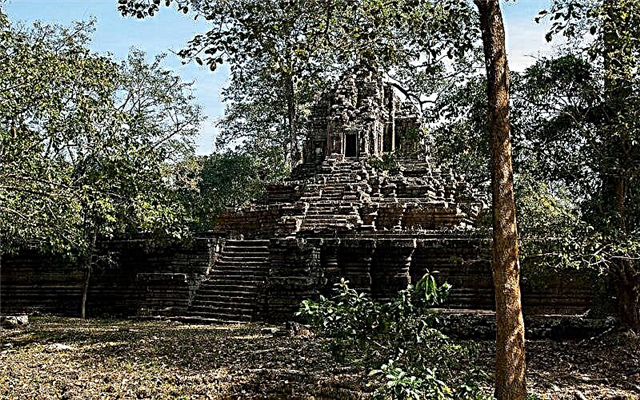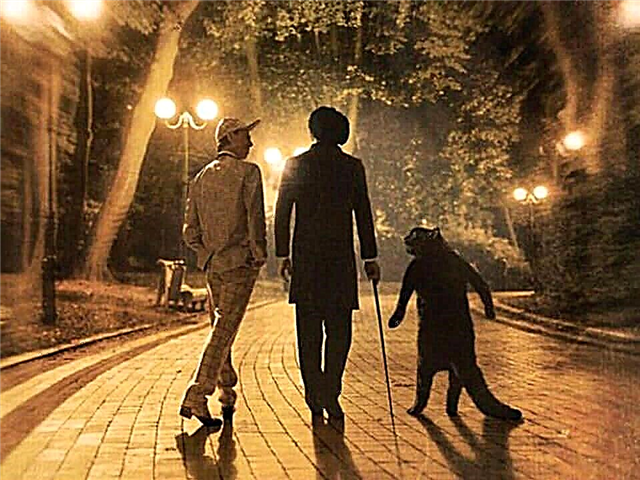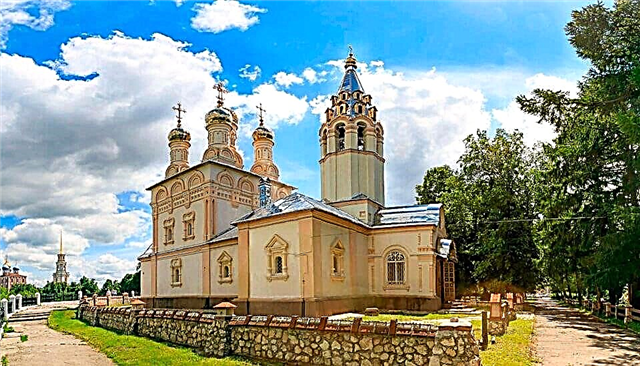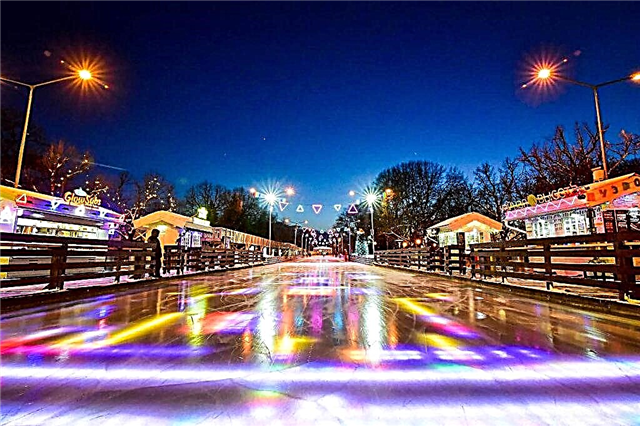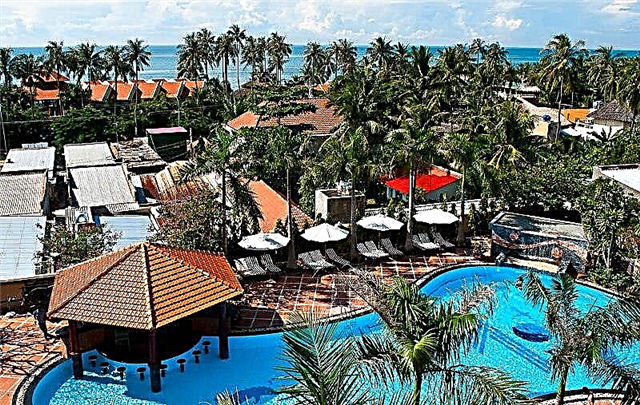The city of Dusseldorf has existed since the 13th century. Over a long time of progressive development, it has become an economic, industrial and cultural center, lying around the northern part of the Rhine. The old city district Altstadt is called the "world bar counter" because of the abundance of traditional German pubs, architectural monuments of the 13th-18th centuries flaunt in the city squares, the picturesque Rhine embankment lights up with colorful lights every evening.
The abundance of historical castles, interesting modern architectural structures, as well as a variety of museum collections attracts tourists from all over the world to Dusseldorf. The best time to travel to the city is spring, summer or early autumn. During this time, parks and gardens dress up in a multicolored variety, and a relaxed atmosphere soars in the air.

The best hotels and hotels at affordable prices.
from 500 rubles / day
What to see and where to go in Dusseldorf?
The most interesting and beautiful places for walking. Photos and a short description.
Old Town - Altstadt
The historical part of Dusseldorf and its cultural center. In addition to the invaluable heritage of past eras, Altstadt will delight the tourist with numerous old beer houses, where brewing traditions have been observed for several centuries. From the Old Town you can go on a fascinating walk along the Rhine or take a walking tour of the surrounding neighborhoods.

Burgplatz
Square on the banks of the River Rhine, the center of the Old Town. The history of this place began with the history of Düsseldorf in the 13th century. The central building of the square is the Castle Tower (Schlosssturm), which houses the Museum of Shipping and Navigation. This building is the remains of the castle of the Duke of Berg that was burned down in the 19th century. There is a panoramic restaurant on the top floor of the Schlosssturm.

New Customs
A complex of buildings erected on the site of the former customs office within the Düsseldorf harbor. The New Customs House is a modern building in 1998 in the style of deconstructivism, invented by F. Gehry, the author of the famous “Dancing House” in Prague. The complex consists of three parts in white, mirror and red colors. Each part is a separate asymmetric complex with curved lines.

Dusseldorf town hall
The building of the city authorities of the 16th century in the typical style of the late "German Gothic" with elements of the Renaissance and Rococo. The oldest facade of the town hall overlooks the Marktplatz square; of all the other parts of the building, it is the only one that has survived almost in its original form. Opposite the building there is a monument in honor of Elector Johann Wilhelm of Palatinate, a great art connoisseur who did a lot for Dusseldorf.

Basilica of Saint Lambert
One of the oldest Catholic churches in Dusseldorf. Its history began in the 8th century with a small chapel built in honor of the missionary St. Lambert. At the end of the 13th century, a monastery was formed on the basis of the church. Inside the temple, there are holy relics and works of art from the early 12th century. The Basilica of St. Lambert is subject to the Vatican's Holy See and has the status of "basilica in minor".

Church of the Apostle Andrew
The former Jesuit church of the 17th century, where the remains of the Wittelsbach royal dynasty rest. After the dissolution of the Jesuit order, the temple was used as an ordinary parish church. In 2005, she was transferred to the possession of the Dominican Order. Despite the modest decoration of the external facade, the interior of the church is executed with grace and some luxury.

Tonhalle Concert Hall
City Philharmonic, located in the former building of the planetarium. This is an ideal venue for concerts, as the spherical shape of the structure provides good acoustics and no blind spots in the auditorium. During the performances, lights are lit on the dome, creating the illusion of a starry sky. Hundreds of concerts are held annually in Tonhalle, and the Düsseldorf Symphony Orchestra often performs here.

Kunstpalast Museum
City Art Gallery, which exhibits and stores more than 100 thousand works of art: paintings, graphic drawings, textile canvases, photographs, glass collages and much more. The collection of the museum includes part of the exhibits of the Düsseldorf Museum of Applied Arts and the collection of ceramics of the Hetyens Museum. The Kunstpalast is housed in a building from the early 20th century.

Goethe Museum
An exposition on the territory of the Jägerhof Palace, dedicated to the life, philosophical path and research of the great German philosopher Johann Goethe. The museum contains not only personal belongings, letters and manuscripts of the thinker, but here you can also see surreal illustrations for the famous work "Faust" or admire the collection of luxury items, commemorative medals and books.

German Museum of Ceramics
A unique collection of ceramic exhibits, the only museum in Germany of this kind. It was created at the very beginning of the 20th century on the basis of the collection of the famous urban collector of antiquities Lauren Heinrich. Since then, the museum has accumulated about 8 thousand copies that have arrived from all over the world. The most impressive exhibit is a 17th century Pakistani ceramic dome.

Art collection of North Rhine-Westphalia
A gallery based on the works of the avant-garde artist Paul Klee. The museum is dedicated to contemporary art of the 20th century. There are works by Matisse, Picasso, Warhol, Pollock, as well as works by Cubists, Fauves, Dadaists, Expressionists and modern trends of the Newest time. The expositions are housed in two buildings called K20 (art of the XX century) and K21 (art of the late XX - early XXI century).

Neanderthal museum
Archaeological Museum, located in the Neandertal Valley in the reserve. It was in this area that the remains of an ancient man were found. The museum is dedicated to the Neanderthal man and the time period in which our distant ancestor lived. Expositions and interactive tutorials allow the visitor to travel back in time and imagine the world as it was tens and hundreds of thousands of years ago.

Benrath Palace
Graceful late 18th century Rococo palace with the transition to classicism, built for the Elector Karl Theodor von der Pfalz. The ruler lived here with his wife. Benrath is surrounded by a picturesque landscape park. The interior decoration and furnishings of the palace have been well preserved and have survived to this day. The site houses the Museum of Natural History and the Museum of European Garden Art.

Heltorf castle
The first mention of Heltorf dates back to the end of the 12th century. Until the middle of the 17th century, these lands constantly changed owners, until they became the property of the Count von Spee family. Representatives of this family still own the castle. The building itself is closed to the public, but there is a beautiful landscaped park around it, where you can take a pleasant walk on weekends and on holidays.

Calcum Castle
A former manor's courtyard of the 9th century, which eventually turned into a small castle. For 1000 years of existence, it has repeatedly changed its appearance. The modern pale pink building was erected at the beginning of the 19th century. Today, Calcum Castle is used as a venue for classical concerts. In addition, the territory houses the state archive of the federal state of North Rhine-Westphalia.

Imperial Palace in Kaiserswerth
Ruins of the Kaiserwerth Fortress in the northern part of Düsseldorf, built during the Early Middle Ages. The remains of the palace have been declared a state monument. The fortress existed until the beginning of the 18th century. It was repeatedly stormed, destroyed, restored and rebuilt. During the War of the Spanish Succession, the castle could not withstand the pressure of 12 thousand cannonballs and fell.

Rheinturm tower
Urban 240-meter TV tower on the banks of the Rhine, the tallest building in Düsseldorf. Broadcasting began in 1981. At the level of 170 meters there is an observation deck, which is visited by about 300 thousand people annually. The TV tower is located close to the historical part of the city and many popular attractions. Rheinturm is considered a modern symbol of Düsseldorf.

Royal alley
One of the most prestigious, picturesque and elegant city streets, created at the beginning of the 19th century. The alley was built on the site of the former defensive fortifications along the moat. Initially, it was supposed to collect a toll on it. By the middle of the 19th century, the street had become one of the most important "arteries" of Düsseldorf. Hotels, restaurants, and administrative buildings were actively built here. These days, the Royal Alley is home to luxury hotels and expensive boutiques.

Hofgarten park
Düsseldorf Central Park, the first state public park created under Karl Theodor. The design of the territory is made in the English style, the architectural buildings were erected in the Baroque style. The infrastructure of the Hofgarten is aimed at meeting the needs of the townspeople for recreation. In the mornings you can meet runners or other athletes here, in the evenings the benches are filled with walking youth.

Rhine embankment
Pedestrian area on the right bank of the Rhine, about 2 km long. Travels through the urban areas Karlstadt, Unterbilk and Altstadt. Within the embankment there are many attractions of Dusseldorf: the town hall, castle tower, Burgplatz and many others. The promenade has existed since the end of the 19th century, but after the Second World War, a motorway was built here. Only since 1995 the territory has regained the status of a pedestrian.


